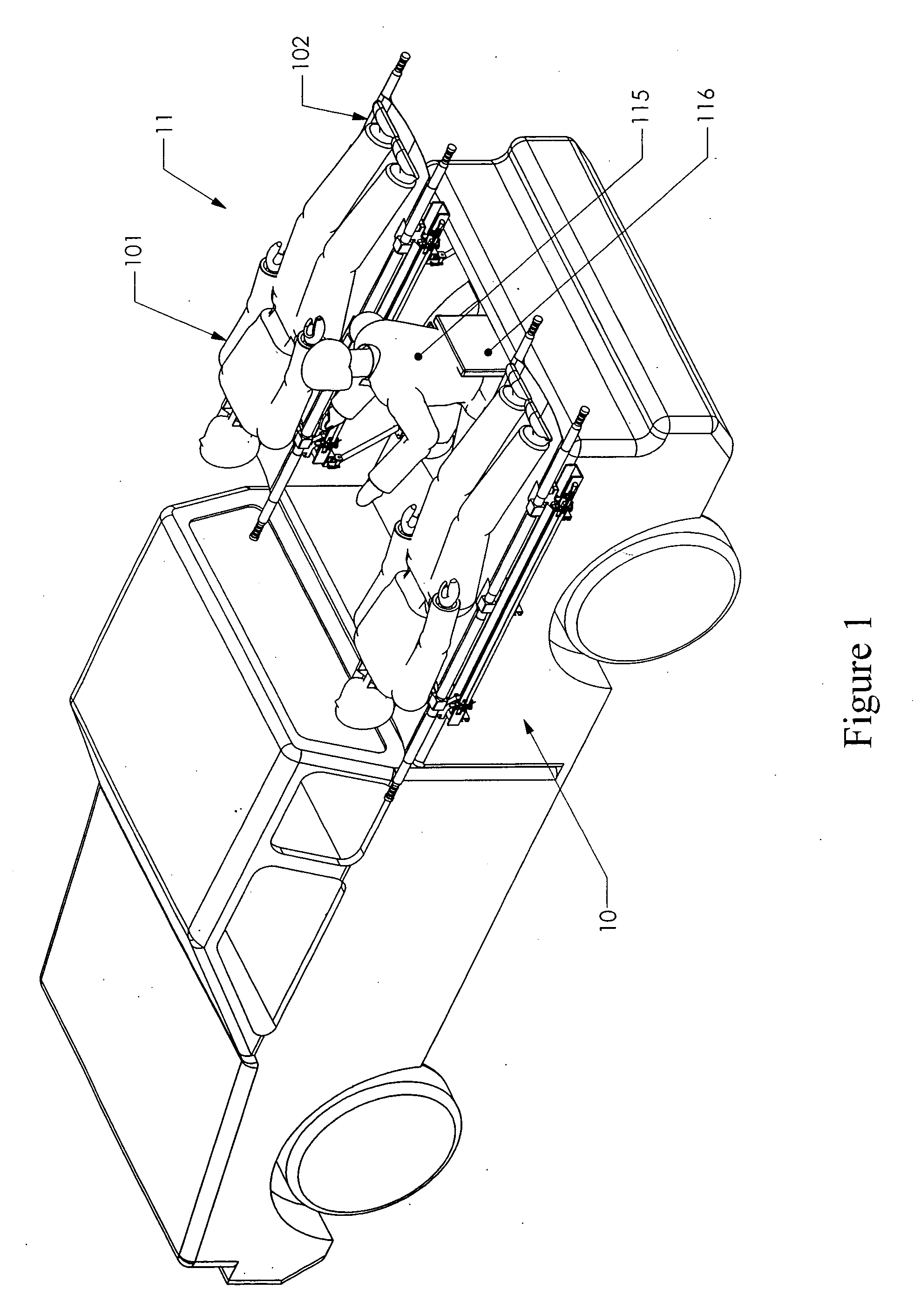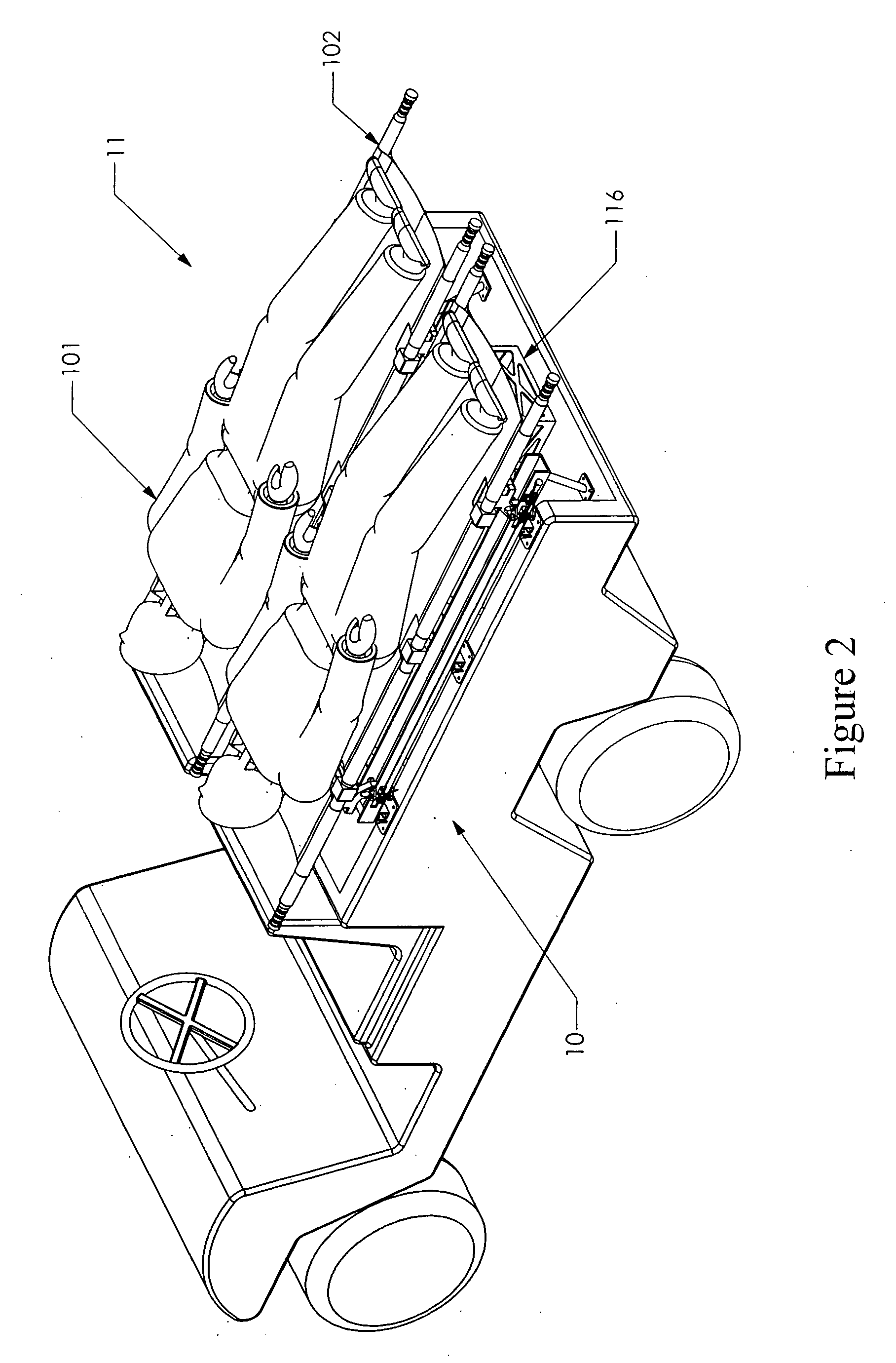Rapid medical evacuation system for trauma patients
a medical evacuation system and patient technology, applied in the direction of transportation items, transportation and packaging, item transportation vehicles, etc., can solve the problems of reducing the mobility of the vehicle, affecting the weight distribution, and small city streets that are impassible to standard-size ambulances
- Summary
- Abstract
- Description
- Claims
- Application Information
AI Technical Summary
Benefits of technology
Problems solved by technology
Method used
Image
Examples
Embodiment Construction
[0025] The Rapid Medical Evacuation System for Trauma Patients (RMES) in accordance with the present invention is intended to be installed in small utility vehicles that, in general, have side by side seating for a driver and passenger in front, and have a cargo bed in the rear. While the RMES is applicable to any vehicle having a rear cargo bed, its benefits are most pronounced when attached to vehicles with narrow widths. Such vehicles include small pickup trucks, off-road utility vehicles, golf karts, etc that have overall “footprint” widths between 50 and 70 inches.
[0026] With alternate reference now to FIGS. 1 and 6, the RMES system is installed in the rear cargo bed of a vehicle and comprises a left support assembly 10, a right support asssembly 11, and a collapsible attendant seat 116. Each of the support assemblies 10 and 11 is equipped with a retention system 104, 110 (FIG. 9) that automatically engages and restrains a stretcher as it is being loaded. While the system desc...
PUM
 Login to View More
Login to View More Abstract
Description
Claims
Application Information
 Login to View More
Login to View More - R&D
- Intellectual Property
- Life Sciences
- Materials
- Tech Scout
- Unparalleled Data Quality
- Higher Quality Content
- 60% Fewer Hallucinations
Browse by: Latest US Patents, China's latest patents, Technical Efficacy Thesaurus, Application Domain, Technology Topic, Popular Technical Reports.
© 2025 PatSnap. All rights reserved.Legal|Privacy policy|Modern Slavery Act Transparency Statement|Sitemap|About US| Contact US: help@patsnap.com



